Which Dogs Have Blue Eyes? [11 Breeds with Photos]
Most dogs have eyes that are some shade of brown, but a few breeds often have blue eyes. Sometimes they have one brown and one blue, a harmless condition known as heterochromia.
Why Do Some Dogs Have Blue Eyes?
Siberian huskies and Australian shepherds commonly have blue eyes because they carry the dominant genetic marker for it. Other breeds can carry the recessive gene trait that sometimes results in blue eyes.
A dog of any breed that has albinism will have blue or light-colored eyes. Purebred and mixed-breed dogs that carry the merle gene, which causes irregular patches of color in their fur, often have blue or light eyes. Piebald dogs, or those with a dark coat with white spots, often have baby blues, too.
Dog Breeds With Blue Eyes
Because blue is the rarest eye color among dogs, it’s always striking and beautiful to see, no matter the breed. We hope you find your favorites in this list of which dogs have blue eyes the most often.
Siberian Husky
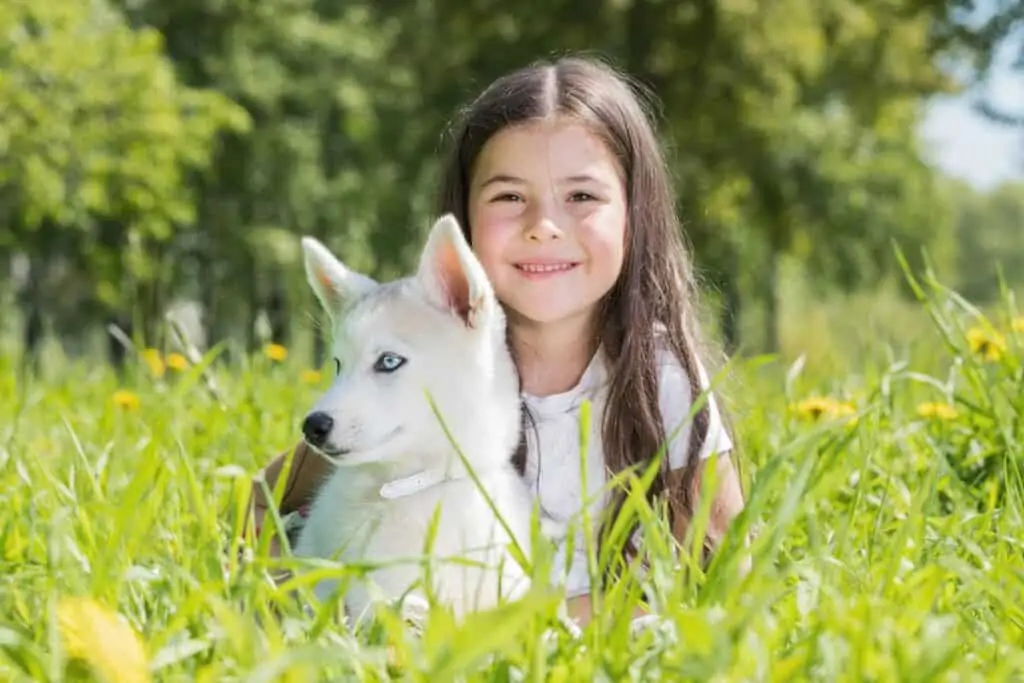
Blue eyes are most common in Siberian huskies. Blue is such a typical eye color among huskies that husky mixed-breed dogs often have blue eyes, even when the other breed rarely does.
Pomeranians, for instance, are a breed that rarely has blue eyes, but a Pomeranian and husky mix, known as a Pomsky, could end up with one or both eyes in a light shade of blue.
Most successful mixes between huskies and other dogs can have one or two blue eyes. The odds go up if the second breed is known for frequent blue-eyed dogs.
Alaskan Klee Kai
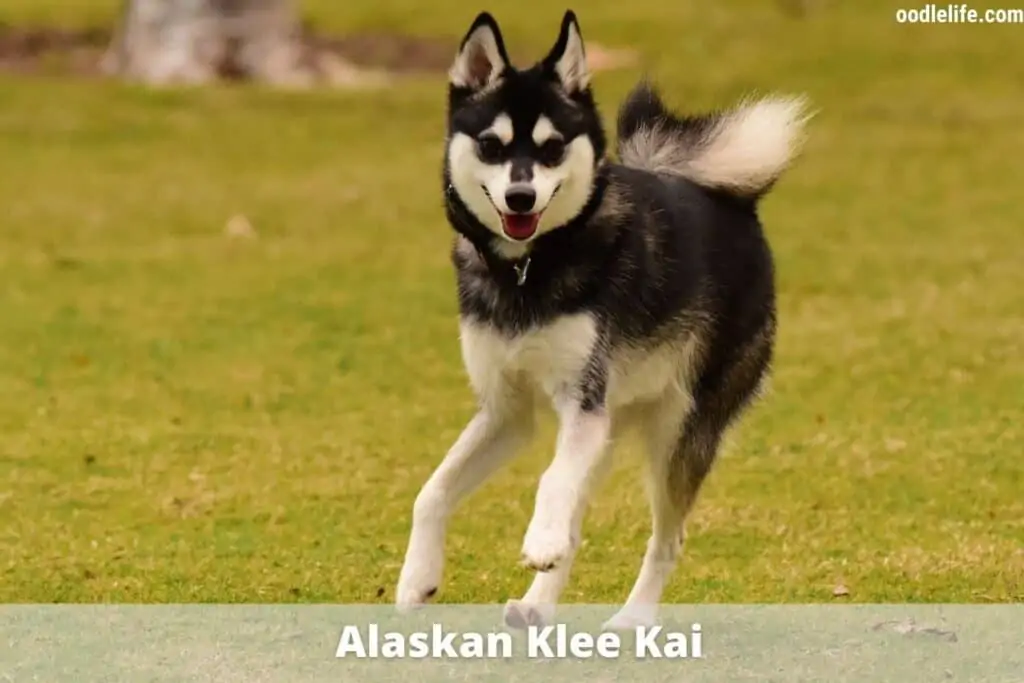
Only the United Kennel Club (UKC) recognizes this dog as a pure breed. This pup comes from a mix of huskies, Alaskan Eskimo dogs, and similar small breeds.
Sometimes called a miniature husky, this dog carries the same genetic marker that gives full-sized huskies frequent blue eyes.
Border Collie
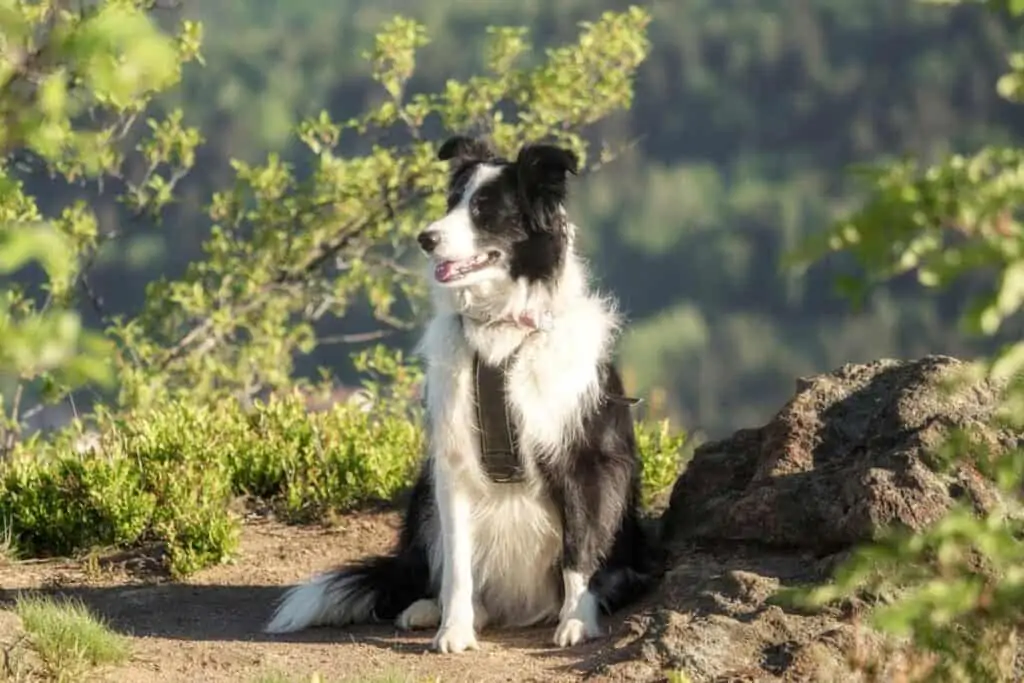
Border collies usually have brown or gold eyes, but those with merle coats can have blue ones. Blue merle border collies often have bright blue eyes. Blue merles have black coats swirled with light patches.
The mixed-breed border Aussie, a mix between the Australian shepherd and the border collie, is likely to have blue eyes.
Australian Shepherd
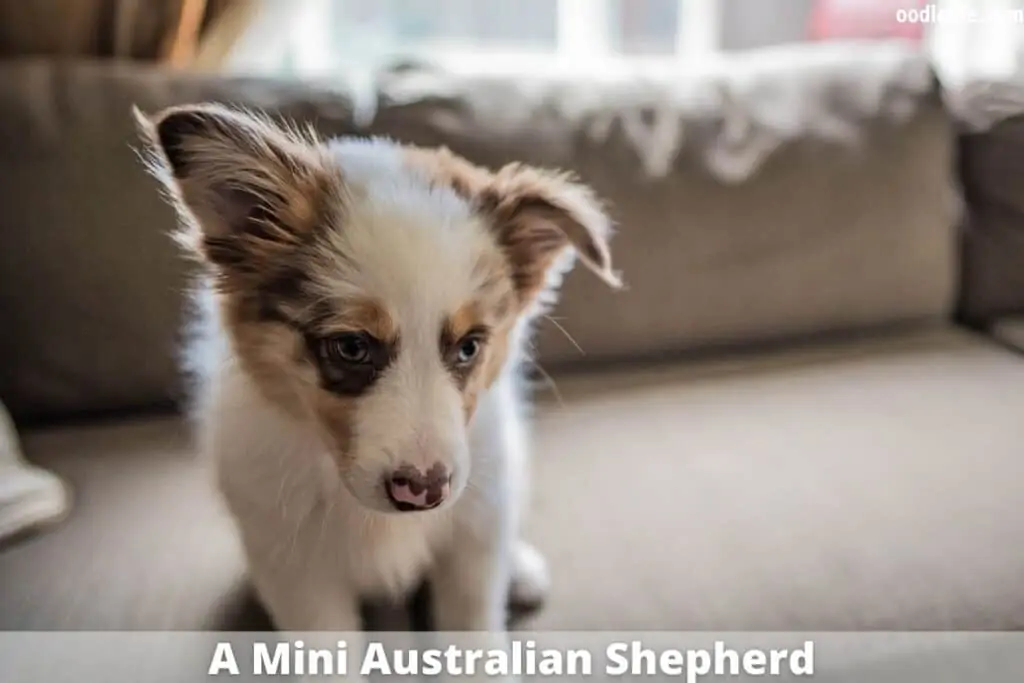
This dog breed carries the gene that gives many pups blue eyes regardless of their coat color or pattern. Many mixed-breed dogs with the Aussie shepherd as a parent end up with one or two blue eyes.
One popular mix, the Aussiepoo or Aussiedoodle, comes from an Australian shepherd and poodle mix. Poodles rarely have blue eyes, but if the Aussie shepherd parent has the merle gene, the resulting Aussiepoo could have pale blue peepers.
Alaskan Malamute
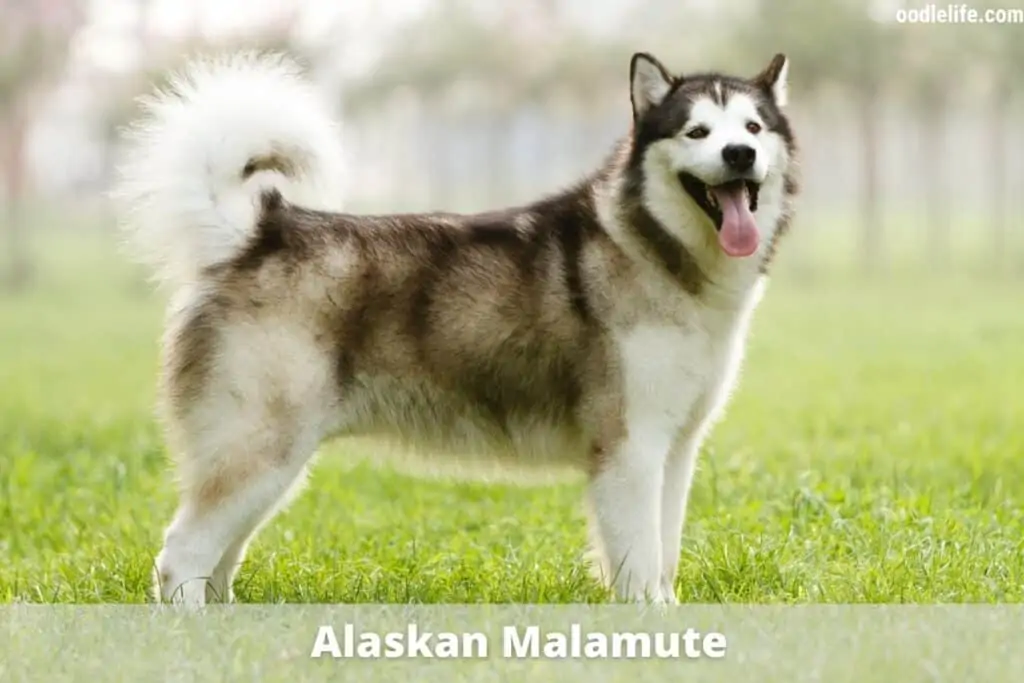
The Alaskan Malamute gets mistaken for huskies and vice versa because of similar coat patterns, size, and head shape.
You can tell huskies and Malamutes apart through a few of their features. Huskies have tails that naturally hang down, while malamutes’ tails snap up and over their backs.
Malamutes have longer hair with ears that point forward more than huskies’ ears do. Huskies have shorter muzzles and feature blue eyes more often than purebred Malamutes.
Shetland Sheepdog
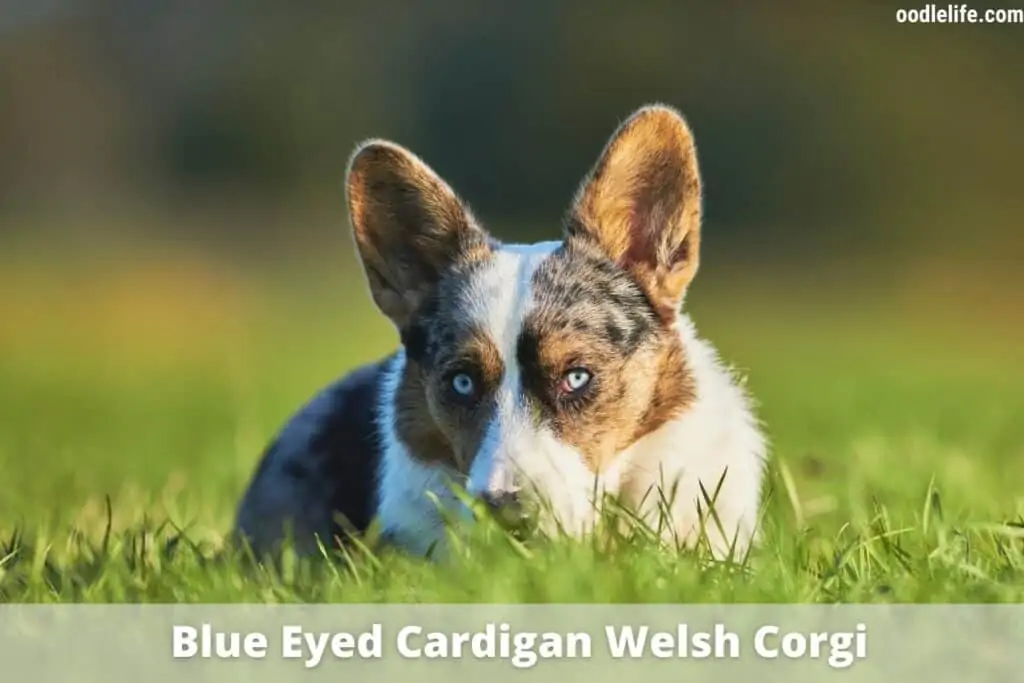
The Shetland sheepdog, commonly called the sheltie, often has blue eyes. Blue merles and those with merle coats in general often have light eyes. Kennel clubs consider blue eyes a fault in shelties that don’t have merle coats, however.
This type of shepherd can cause blue eyes in mixed-breed dogs the same as other shepherds. People often mix up shelties and border collies, but collies are taller than shelties and have longer muzzles.
Catahoula Leopard Dog
Catahoulas often have blue eyes because of the merle gene that gives them their signature leopard-spotted coats. Their fur can range from shades of light to chocolate brown, black, reddish-brown, and gray. Sometimes these dogs have brown, amber, or striking green eyes, too.
Cardigan Welsh Corgi
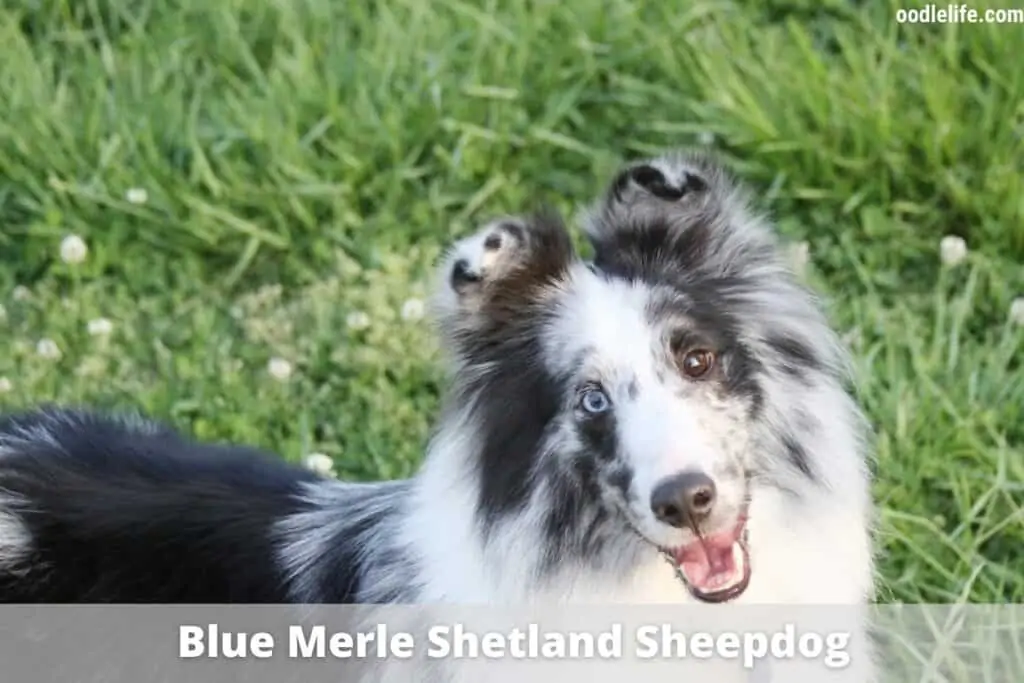
People don’t know corgis as a blue-eyed breed like huskies, but those with merle coats can have blue eyes. Some may have one brown and one blue, while others have shades of brown and blue in both eyes.
Dachshund
Though rare, blue eyes do show up in some Dachshunds that have merle coats. A marbled or dappled pattern significantly raises the odds of the dog having one or two blue eyes. Sometimes, like with corgis, both eyes will have shades of brown and blue in them.
Great Dane
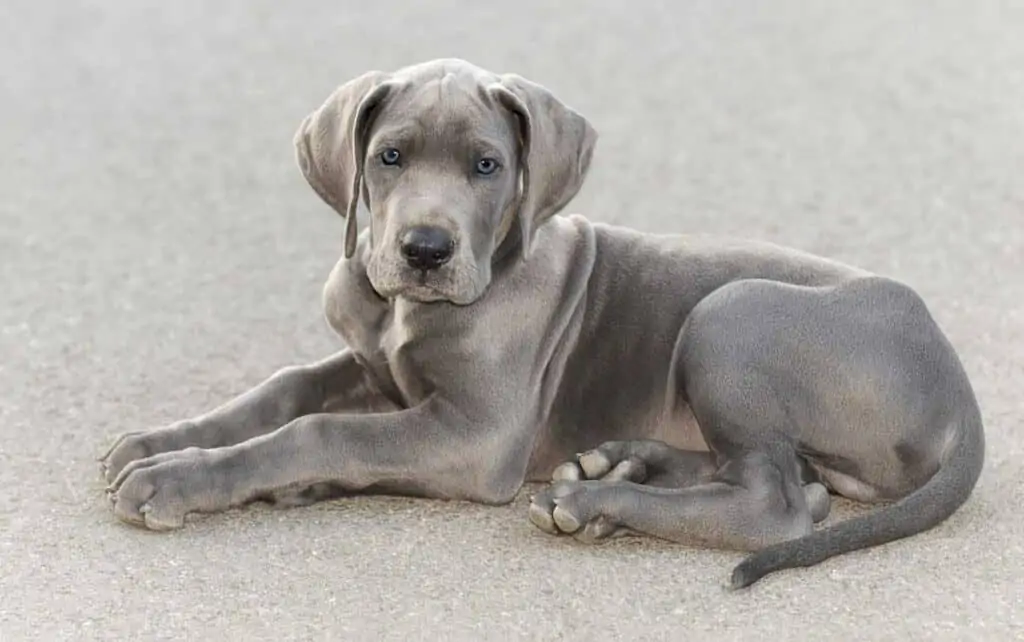
Great Danes often have blue eyes when they have a merle coat. Black and white Great Danes have blue eyes more often than those with solid color coats or brown to gray shading.
Dogs of this breed start life with blue eyes that change color as they age, so you can’t determine if a Great Dane will have blue eyes permanently until it’s reached maturity.
Weimaraner
Weimaraners all have light blue eyes at birth. After about six months, most of their eyes change to a golden or brown color. Some Weimaraners’ eyes change to a darker gray-blue shade instead and remain that color throughout their lives.
Pit Bull
Blue eyes among pit bulls are rare and occur most often in pitties with light coats and those with the merle gene. Pit bulls are a breed where blue eyes sometimes come with hearing and vision complications like blindness or deafness.
Dalmatian
A high likelihood exists that a blue-eyed Dalmatian will be deaf. The genetic link for deafness in Dalmatians comes from the piebald gene that creates their coat pattern but is most common when their irises are blue.
Breeders try to reduce the occurrence of blue eyes because of this risk, making blue-eyed Dalmatians rare.
Cane Corso
This dog, also known as the Italian mastiff, sometimes has icy blue eyes. This pup’s coat is typically a solid bluish-gray. When the coat leans toward a silvery shade, the dog’s eyes will sometimes be blue.
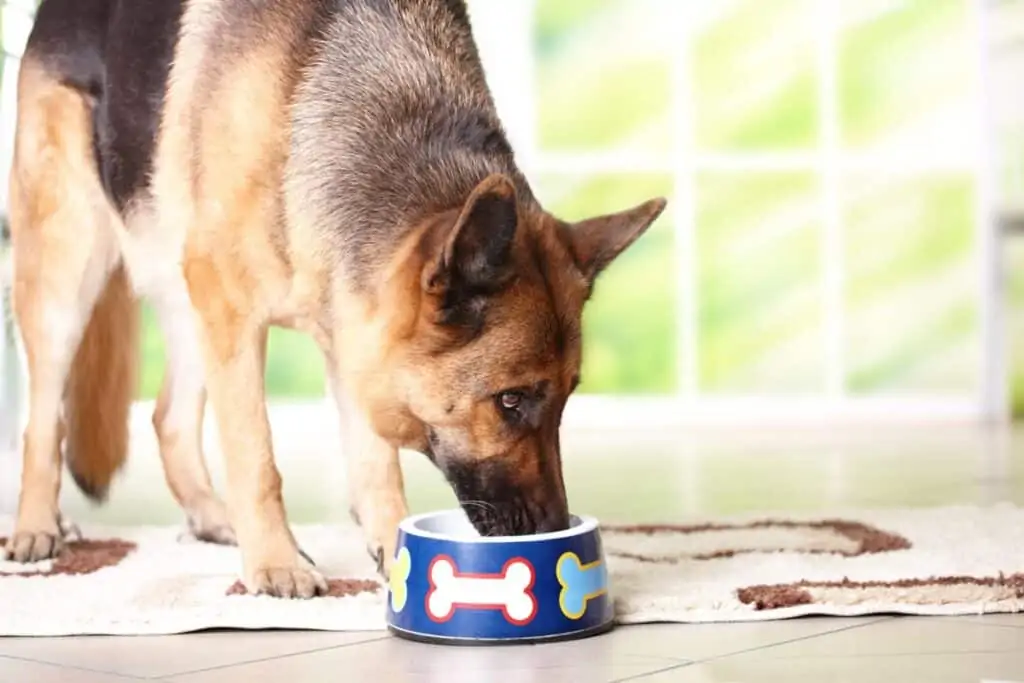
German Shepherd
Though uncommon, blue-eyed German shepherds or those with one blue eye are out there. Most of the blue eyes you’ll find in this breed occur in mixed-breed pups with one parent from a predominantly blue-eyed breed like an Australian shepherd or a husky.
Thoughts About Which Dogs Have Blue Eyes
Some dogs like huskies often have blue eyes, but light eyes are rare for some pups. Serious health problems are associated with this coloring in some dogs. For most breeds, however, blue eyes are a safe and beautiful feature.